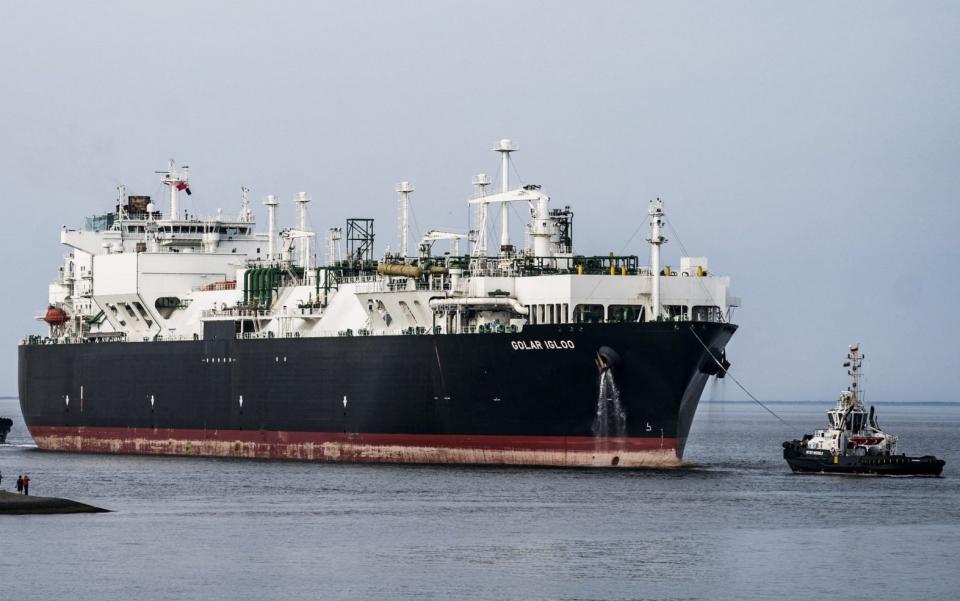This unknown company helps to break Putin’s gas blockade – very profitably indeed

The price of crude oil is lower now than just before the Russian invasion of Ukraine but the price of gas, in Europe at least, is about six times higher. Why? Oil is cheap to move from where it is extracted to where it is needed; gas is not. So if Russia stops supplying oil to Europe, alternative supplies can be found easily. When it cuts off the gas, there’s a shortage and prices go through the roof.
In America, by contrast, there’s plenty of gas to go around and the price is far lower than in Europe. Anyone who can find a way to get it from America – or anywhere else where it is cheap – to Europe can make a fortune. This week’s stock has done just that.
Golar LNG is a small American company that owns two of the world’s five floating plants for the conversion of ordinary natural gas into LNG for onward shipping anywhere in the world. These plants, which are called FLNGs and look like an oil refinery mounted on board a ship, are moored near offshore natural gas fields, from where gas is piped aboard and then purified and cooled to the point that it becomes liquid and takes up just 1/600th of the space occupied by the gas.
In its liquid state it is transferred to an LNG carrier moored alongside and then taken across the oceans to where it is needed, where another floating plant not dissimilar to an FLNG called an FSRU turns the liquid back into gas for onward transport via pipeline.
“The key if you want to profit from the disparity in gas prices between Europe and elsewhere is that, of the three vessel types in this supply chain, the FLNGs, the tankers and the FSRUs, it is the FLNGs that are in really short supply,” says Richard de Lisle, who owns Golar LNG in his De Lisle America fund.
In fact, as we mentioned, Golar has two of the world’s five FLNGs, whereas de Lisle says LNG tankers are a “commodity” and FSRUs are “somewhere in between”. In fact the company used to own a fleet of LNG tankers and some FSRUs; they have now been spun off into separate businesses in which Golar retains a stake.
Neither is the shortage of FLNGs going to be rectified soon. Vessels of such size and complexity take years to build, so any started now – and Golar is among those building more – are likely to enter service long after the current opportunity to make outsize profits from global gas price disparities has ended.
Although the disparity in gas prices is most apparent between Europe and America, the same profitable trade works just as well in any part of the world where gas is cheap – and there are few places where it is cheaper than where it is produced as a previously unwanted by-product of oil extraction.
Two such oilfields are in Senegal and Cameroon and it is here that Golar’s FLNGs will be put to work (one is already in operation; the other is due to start work next year at prices already agreed with BP, which has leased the vessel).
“I’ve seen estimates for profits, on the ‘Ebitda’ measure, from these two vessels of $270m (£234m) this year, $343m in 2023 and $429 in 2024,” says de Lisle.
“These are significant enough figures relative to Golar’s market value of $2.9bn but I think they are conservative and they don’t include the earnings from its minority stakes in the outfits it span off. It is also a developing business and has acquired a lot of know-how in this new and evolving field – I would say it’s the industry leader.”
He does acknowledge however that Golar’s share price would fall heavily – from the current $27 or so to nearer $20 by his estimate – if there were a sudden resolution to Europe’s gas shortage. “If Putin is toppled tomorrow and all the pipelines reopen, the case for the stock will become a lot weaker, although its innovative approach to solving problems in the oil and gas supply chain will still give it a future,” de Lisle says.
Questor will therefore keep a close eye on the company as the war in Ukraine enters a new and perhaps more unpredictable phase following the country’s recent victories against Russia. For now the stock offers a neat way to share in the fruits as free enterprise seeks novel ways to counter Putin’s gas blockade.
Questor says: buy
Ticker: Nasdaq: GLNG
Share price at 5:45pm: $27.27
Read the latest Questor column on telegraph.co.uk every Sunday, Tuesday, Wednesday, Thursday and Friday from 6am.
Read Questor’s rules of investment before you follow our tips.

 Yahoo Finance
Yahoo Finance 